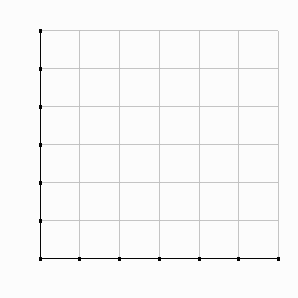| Example: IBM Pisces 370/68
series computer: TFC = $30M ? How does TFC look? ? What is TVC when Q=0 ? What is TVC at Q=500? ? What does slope of TC tell you? ?What does slope of TVC tell you?
|
 |
III. Theory of the firm: production and costs
B. Costs for the firm
Introduction
Any firm which maxes profits must minimize costs
Economic cost
of an input: the value of the input in its best alternative use
(i.e., its opportunity cost)
Most problematic: capital
Generally, if you borrow, you pay interest--this is a cost, both to
accountants and to economists
If you use equity capital, direct investment, accountants call the
return profit. But invested funds have an O/C very similar to borrowed funds--those funds
could have earned some return by being loaned out instead. This foregone income is an O/C
and is considered as a cost in econ.
Basic cost equation:
TC = pL.L + pK.K + p3.F3 + p4.F4 +...
PK includes the normal return to K.
1. Short-run costs
Recall, in SR, some inputs are in fixed supply. This results in fixed costs.
a. Total costs and unit costs
Total fixed costs (TFC): Costs which do not change with output and which the firm must pay even if Q=0.
Recoverable only if the firm exits from the
industry vs "sunk costs"; must be paid even with exit.
Total variable costs (TVC): Costs which change with the level of output.
TC = TVC + TFC
Ex. Here: pK.K is fixed / pL.L is variable
So: TC = PL.L
+ PK.K
= TVC
+ TFC
| Example: IBM Pisces 370/68
series computer: TFC = $30M ? How does TFC look? ? What is TVC when Q=0 ? What is TVC at Q=500? ? What does slope of TC tell you? ?What does slope of TVC tell you?
|
 |
Unit costs
2 main types:
(1) marginal
cost (MC): the change in total costs associated with a change in
output.
Basic def.: MC = DTC/DQ (true in SR and LR)
In the SR, DTFC/DQ = 0, so
| DTC/DQ = DTVC/DQ+DTFC/DQ = | DTVC/DQ in SR = SRMC |
| slope of TC | slope of TVC |
In SR, MC does not change with a change in TFC.
(2) Average costs: costs per unit of q.
TC/Q = TVC/Q + TFC/Q
ATC = AVC + AFC
note: AFC falls continuously as Q rises (it's a rectangular hyperbola)
| Complete worksheet on unit costs |  |
b. Relating costs and resource productivity--the short run
Issue now: Why do a firm's SR costs rise as output rises?
Recall: We started SR production theory by looking at
resource productivity
MPL, APL, diminishing returns
So what? We'll see so what now.
These resource productivity considerations determine the behavior of
firm costs.
Intro. econ: costs rise because as you hire more,
hire less well suited resources, pay higher prices for inputs, etc.--all false in general.
The truth: for most firms, as Q rises in SR, input prices are constant.
Quality of inputs is constant.
Unit costs rise in SR because of
diminishing returns
(1) MC and MPL
Suppose a firm wants to increase Q
? In the SR, what will the firm have to do?
? What measures how much their costs will rise?
? What do we call the extra output we get?
We combine this information to calculate MC:
MC = DTC/DQ = DTVC/DQ = D(PL.L)/DQ
= PL.(DL)/DQ = PL / (DQ/DL) = PL/MPL
End result:
MC = PL/MPL
Notes: PL is constant
MPL rises => MC falls
MPL falls (because of DMR) => MC rises
Ex:
PL = $60
MPL = 40
? MC of the 40 extra units =?
Recap: 2 ways
to measure MC:
Method 1: given total cost and output data: DTC/DQ
Method 2: given input cost and productivity data: PL/MPL
In general, the information is about the same.
Choose the method which gives you
the more precise estimate
(2) AVC and APL
Works the same way:
AVC = TVC/Q = PLL/Q = PL/(Q/L) = PL/APL
Again, APL rises => AVC falls,
APL falls (diminishing average returns) => AVC rises
| See worksheet on resource productivity and SR costs: | |
 |
 |
Summary:
MC = PL/MPL:
MPL
falls => MC rises
AVC = PL/APL:
APL
falls => AVC rises
Now: all inputs are variable
SR productivity concepts aren't meaningful now.
The isocost line (Co)
Recall: TC = PL.L + PK.K
If we fix TC at TCo, TC becomes a constraint just like BL constrained consumers
Helpful to be able to depict this in input space, to combine it with isoquants
When we do this, we get an isocost line: an isocost line tells us the combinations of inputs which can be purchased for the same total cost.
TCo = PL.L
+ PK.K =>
PK.K = TCo - PL.L
=>
K = TCo/PK - (PL/PK).L
Intercept = affordable K w/L=0
Slope = PL relative to PK
| Example: TC = 300 300 = 60L + 20K K = 300/20 - (60/20)L K = 15 - 3L Opp.cost of 1L = 3K ? +PL => steeper or flatter Co? |
 |
The logic:
| General case: | | | Example here: | |
| PL = $ needed for an extra L | | | PL = $60 | |
| PK = rate $ accumulated by giving up K | | | PK = $20 | |
| | | |||
| => PL/PK | | | $60/($20 per K) | |
| = total K you must give up to afford 1L | | | 3K for 1L | |
| = |-DK/DL| (the size of the slope of Co) | | |
The math:
Along Co, DTC = 0 =>
vary L&K to keep TC the same =>
PKDK = PLDL =>
|-DK/DL| = PL/PK
size of slope = PL relative to PK